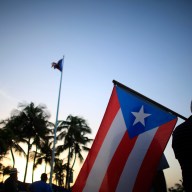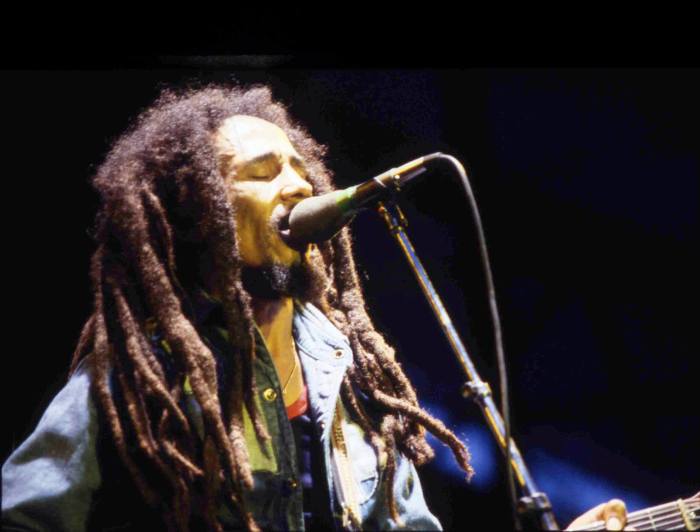NEW YORK – With both engines out, a cool-headed pilot manoeuvred his crowded jetliner over New York City and ditched it in the frigid Hudson River on Thursday, and all 155 on board were pulled to safety.
It was, the governor said, “a miracle on the Hudson.” One victim suffered two broken legs, a paramedic said, but there were no other reports of serious injuries.
The US Airways Airbus A-320 bound for Charlotte, N.C., struck a flock of birds during takeoff minutes earlier at LaGuardia Airport, apparently disabling the engines.
The pilot, identified as Chesley B. “Sully” Sullenberger of Danville, Calif., “was phenomenal,” passenger Joe Hart said.
“He landed it – I tell you what – the impact wasn’t a whole lot more than a rear-end (collision). It threw you into the seat ahead of you.
“Both engines cut out and he actually floated it into the river,” he added.
In a city still wounded from the aerial attack on the World Trade Centre, authorities were quick to assure the public that terrorism wasn’t involved.
The plane was submerged up to its windows in the river by the time rescuers arrived in Coast Guard vessels and ferries.
Some passengers waded in water up to their knees, standing on the wing of the plane and waiting for help.
Police divers had to rescue some of the passengers from under water, Mayor Michael Bloomberg said. Among those on board was one infant who appeared to be fine, the mayor said.
Helen Rodriguez, a paramedic who was among the first to arrive at the scene, said she saw one woman with two broken legs.
Fire officials said others were evaluated for hypothermia, bruises and other minor injuries.
“We had a miracle on 34th Street. I believe now we have had a miracle on the Hudson,” Gov. David Paterson said.
The crash took place on one of the coldest days of the season in New York.
“The captain said, ‘Brace for impact because we’re going down,”‘ passenger Jeff Kolodjay said.
He said passengers put their heads in their laps and started praying. He said the plane hit the water pretty hard, but he was fine.
“It was intense. It was intense. You’ve got to give it to the pilot. He made a hell of a landing,” Kolodjay said.
Another passenger, Fred Berretta, who was on his way home to Charlotte from a business trip, told CNN doors were opened on both sides of the plane “as soon as we hit the water.”
Witnesses said the plane’s pilot appeared to guide the plane down.
Barbara Sambriski, a researcher at The Associated Press, watched the water landing from the news organization’s high-rise office.
“I just thought, ‘Why is it so low?’ And, splash, it hit the water,” she said.
Paramedics treated at least 78 patients.
Coast Guard boats rescued 35 people who were immersed in the frigid water and ferried them to shore. Some of the rescued were shivering and wrapped in white blankets, their feet and legs soaked.
One commuter ferry, the Thomas Jefferson of the company NY Waterway, arrived within minutes of the crash, and some of its own riders grabbed life vests and lines of rope and tossed them to plane passengers in the water.
“They were cheering when we pulled up,” ferry captain Vincent Lombardi. “We had to pull an elderly woman out of a raft in a sling. She was crying.
“People were panicking. They said, ‘hurry up, hurry up.”‘
Two police scuba divers said they pulled another woman from a lifeboat “frightened out of her mind” and lethargic from hypothermia.
Another woman fell off a rescue raft, and the divers said they swam over and put her on a Coast Guard boat.
US Airways Flight 1549 took off at 3:26 p.m.
It was less than a minute later when the pilot reported a “double bird strike” and said he needed to return to LaGuardia, said Doug Church, a spokesman for the National Air Traffic Controllers Association.
He said the controller told the pilot to divert to an airport in nearby Teterboro, N.J.
It was not clear why the pilot did not land at Teterboro.
Church said there was no mayday call from the plane’s transponder.
The plane splashed into the water off roughly 48th Street in midtown Manhattan – one of the busiest and most closely watched stretches of the river.
US Airways CEO Doug Parker confirmed that 150 passengers, three flight attendants and two pilots were on board the jetliner.
An official speaking on condition of anonymity because the investigation was still ongoing identified the pilot Sullenberger.
A woman answered and hung up when the AP asked to speak with Sullenberger’s family in Danville.
Sullenberger, 58, described himself in an online professional profile as a 29-year employee of US Airways. He started his own consulting business, Safety Reliability Methods Inc., two years ago.
The plane remained afloat but sinking slowly as it drifted downriver.
Gradually, the fuselage went under until about half of the tail fin and rudder was above water.
Bloomberg said the aircraft finally wound up near Battery Park, at the lower tip of Manhattan and about seven kilometres from where the pilot ditched it.
The Federal Aviation Administration says there were about 65,000 bird strikes to civil aircraft in the United States from 1990 to 2005, or about one for every 10,000 flights.
“They literally just choke out the engine and it quits,” said Joe Mazzone, a retired Delta Air Lines pilot. He said air traffic control towers routinely alert pilots if there are birds in the area.
The Hudson crash took place almost exactly 27 years after an Air Florida plane bound for Tampa crashed into the Potomac River just after takeoff from Washington National Airport, killing 78 people.
Five people on that flight survived.
On Dec. 20, a Continental Airlines plane veered off a runway and slid into a snowy field at the Denver airport, injuring 38 people.
That was the first major crash of a commercial airliner in the United States since Aug. 27, 2006, when 49 people were killed after a Comair jetliner mistakenly took off from the wrong runway in Lexington, Ky.
















